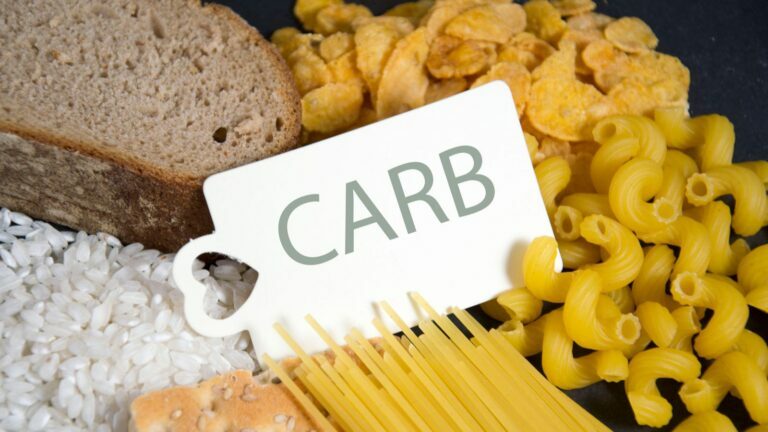Carbohydrates or carbohydrates are found naturally in certain foods. For example sweet starchy cereals and dairy products contain varying amounts of carbohydrates. Learn about the three types of carbohydrates and the foods that contain them. When foods and drinks containing carbohydrates are digested the carbohydrates are broken down into glucose to fuel our cells and blood glucose or blood sugar levels rise. In people without diabetes blood glucose levels rise after meals but the body’s response to insulin prevents levels from rising dramatically. If you have diabetes the procedure may not work as expected. How carb counting can help control your blood sugar depends on your treatment regimen and whether or not your body is producing insulin.
Type 1: If you have type 1 diabetes the pancreas no longer makes insulin so you must take basal insulin and include carbohydrates in your diet along with insulin doses during meals. To do this you need to know how many grams of carbohydrates are in your food – Q Carb Count! Type 2: People with
Type 2: diabetes is insulin resistant and does not make enough insulin so it is important to pay attention to carbohydrate intake. Consuming a certain amount of carbohydrates with meals throughout the day rather than all at once helps prevent blood sugar spikes. People taking oral medications can use a simpler form of carbohydrate counting than insulin.
How do you count Carbs?
Diabetics are often unaware of the effects carbohydrates have on blood sugar levels. Excessive carbohydrate intake can be a risk factor for disease. Excessive consumption of refined carbohydrates can raise blood sugar levels which is harmful for diabetics. Therefore it is necessary to know the relationship between diabetes and carbohydrates, make correct food choices and avoid eating too many carbohydrates.Not all carbohydrates are equal for diabetics.Some carbohydrates are rich in Healthy foods and also contain other nutrients your body needs. You have to remember that your body needs carbohydrates, especially complex carbohydrates to produce the energy it needs to function. Carbohydrates can benefit diabetics when consumed in appropriate amounts. Therefore you should not completely cut out carbohydrates. However, monitoring your daily carbohydrate consumption can improve your quality of life, stay healthy and avoid diabetes complications including kidney disease, heart disease, stroke and more especially for people with diabetes. It is recommended that you eat in moderation.
How Many Carbs Your Food Needs?
You can find out how many carbohydrates are in a food by reading the food label. There are other apps and tools available to help you calculate if a product doesn’t have a nutrition label such as a piece of fruit or vegetable. For example the Food Composition Database of the United States Department of Agriculture. Contains nutritional information for thousands of foods in a searchable format. The good news is that the more you practice carbohydrate counting the more likely you are to remember the carbohydrate content of the foods you usually eat.
There are two things on the Nutrition Facts label that you should pay attention to when counting carbs:
Serving size. A serving size refers to how much a person usually eats or drinks and all the information on the label is about the amount of that particular food. If you eat more you need to take into account additional nutrients. For example, eating two or three servings of something means you should double or triple the number of grams of carbohydrates (and all other nutrients) on the label in your calculations.
Grams of total carbohydrates this includes all carbohydrates: starches sugars and fiber. That’s right: you don’t have to worry about added sugar grams—they’re included in the total carb count! Added sugars and other calories are included below the list of total carbohydrates to give you more information about what you’re eating. And even if you don’t have to worry about added sugar when counting carbs you should still aim to reduce the amount of added sugar in your diet.
Suitable Carbs to consume
The American Diabetes Association recommends eating good carbohydrates for everyone whether they have diabetes or not. You can break it down into three categories: fiber starch and sugar and avoid refined sugars including processed carbohydrates, cane juice and soda.
The three good types of carbohydrates provide many benefits that can improve your health. It is described below.
Fiber
- Studies show that fiber provides many health benefits to the body.
- It lowers blood pressure and cholesterol levels and helps you lose weight.
- The body maintains blood sugar at an optimal level.
Starch
Studies conducted by the American Diabetes Association show that starch helps prevent blood sugar spikes by releasing glucose slowly into the bloodstream. You can get carbs by eating vegetables, whole grains and fruits.
Sugar
It is generally not good for people with diabetes but it can help people with low blood sugar return blood sugar to recommended levels. A study conducted by the ADA in this setting recommends consuming at least 15 grams of carbohydrates if blood sugar levels do not rise after the first meal.
We, at Crypto Food, offer several tips about the important aspects of food and a healthy lifestyle. We tend to assist you to arrange specifically for varied food varieties and supply you with complete help to browse our weblog to grasp additional tips.

